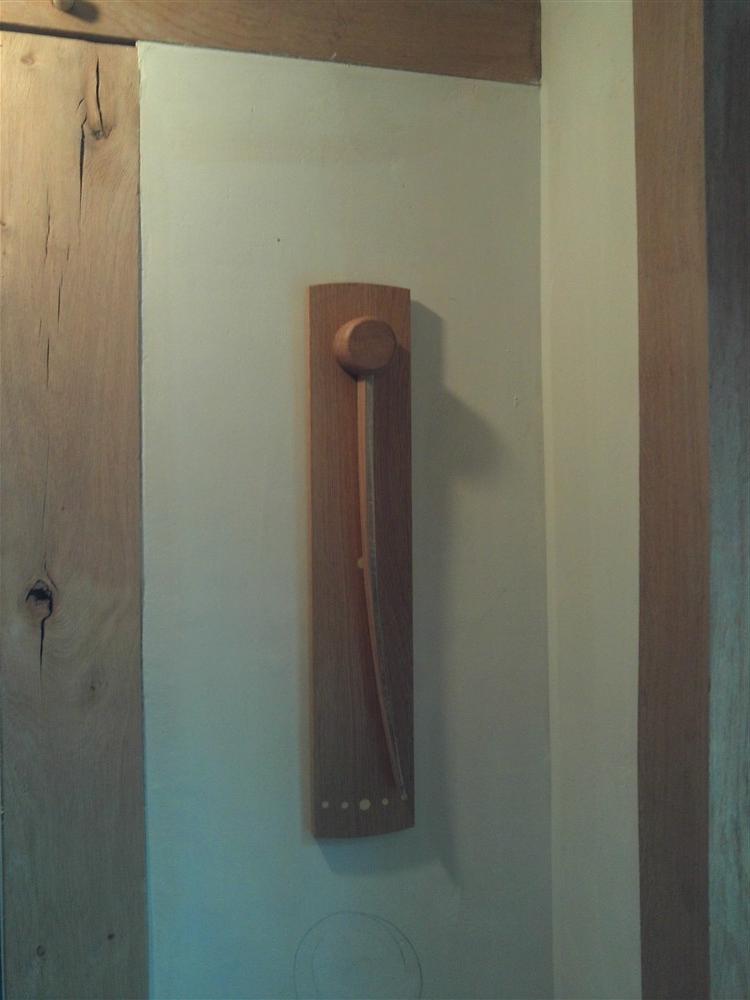Very good question.
I had a piece of bog oak inside for 3 or 4 months, and measured it to the 1/100th of a mm before and after. It shrank less than a 10th of a mm. Custard of this parish took moisture measurements when he bought a load of the bog oak from me, and got figures of 10 to 12%, and this despite it standing in an open-sided barn for the last 20 years. All I can conclude from this is that this timber is now very stable. With a super-insulated house and a whole house ventilation system, we have an extremely stable internal environment. I have a cross-grain humidity indicator in the house which hasn't moved since I made it. So the only thing which I can see affecting the table is the woodburner in the same room, which might induce a little shrinkage. I can't see any possibility of expansion from the current dimensions. That's the reason for the buttons. There is a secondary reason, which is that posting on a woodworking site I am conscious that people might copy aspects of the design but in a different set of conditions, and so I try to do the right thing even if unnecessary in my circumstances.
I did consider having a gap parallel to the leg profile, say 3 or 4mm, but thought this could only ever be a dust trap and spider hidey-hole. I also considered emphasising the join by using a band of contrasting timber in the table top to surround the legs, but I think that would have been visually OTT. If I was building this table for someone else in an unknown or less stable environment, I'd possibly have a think about including some compressible material in the junction between the legs and the tabletop. Five or 6 mm of black rubber done neatly could provide a good solution, perhaps, and would be very straightforward to do.
 ) standard design, so some or all of it isn't going to be to everyone's taste. However, we like the look of those, being just a little quirky on an otherwise fairly flat facade. When viewed as a whole, they are pretty discreet on a fair sized piece of furniture.
) standard design, so some or all of it isn't going to be to everyone's taste. However, we like the look of those, being just a little quirky on an otherwise fairly flat facade. When viewed as a whole, they are pretty discreet on a fair sized piece of furniture.































